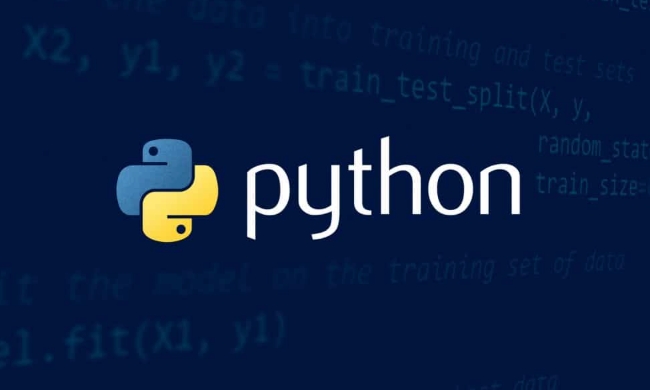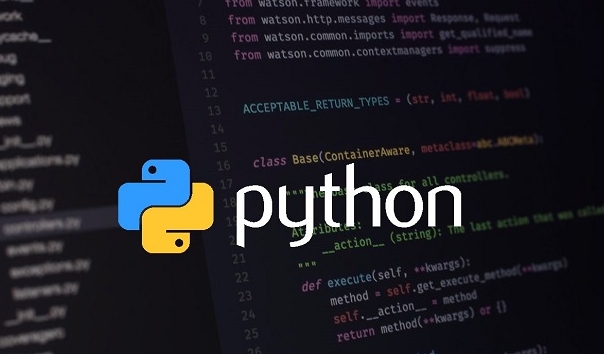 Backend Development
Backend Development
 Python Tutorial
Python Tutorial
 Creating RESTful APIs with Python Flask or Django REST Framework
Creating RESTful APIs with Python Flask or Django REST Framework
Creating RESTful APIs with Python Flask or Django REST Framework
Jul 06, 2025 am 02:39 AMFlask is suitable for small projects or customized needs, while Django REST Framework (DRF) is more suitable for medium and large projects. 1. Flask is a lightweight framework with high freedom. It defines routing and processing request logic through @app.route(), which is suitable for quickly building simple interfaces; 2. DRF is based on Django, providing core functions such as Serializers, Views and Routers, supporting automatic URL management, permission control and paging, improving development efficiency and code structure clarity; 3. Selection basis includes: if the project is low, select Flask, choose DRF, if there is already a Django project or needs long-term maintenance, use Flask for high flexibility requirements, and use DRF to emphasize development efficiency and team collaboration; 4. Beginners recommend learning Flask first to understand the underlying mechanism, and then advanced to use DRF to master advanced functions.

Want to quickly build a RESTful API with Python? Flask and Django REST Framework (DRF) are both good choices, depending on your project needs and your familiarity.

Flask: Lightweight and flexible, suitable for small projects or customized needs
Flask is a micro-framework with a simple core and high degree of freedom. If you don't have many API features, want to control details, or just make a prototype, Flask is a good choice.

Basic steps to create a RESTful API using Flask:
- Install Flask:
pip install flask - Define routes with
@app.route() - Processing logic according to request methods (GET, POST, etc.)
- When returning JSON data,
jsonify()is usually used
For example, write a GET interface to obtain user information:

from flask import Flask, jsonify
app = Flask(__name__)
@app.route('/users/<int:user_id>', methods=['GET'])
def get_user(user_id):
# Suppose the data is fetched from the database here user = {"id": user_id, "name": "Alice"}
return jsonify(user)Flask has the advantage of being quick to get started and has few configurations, but the disadvantages are also obvious: as the number of interfaces increases, the code is prone to become messy and lacks a unified structure.
Django REST Framework: Full-featured, suitable for medium and large projects
If your project is large or has used Django as the backend, DRF is a more suitable choice. It is based on Django, encapsulates many commonly used functions, and has higher development efficiency.
Several core concepts of DRF:
- Serializers : Responsible for data conversion and verification
- Views : Processing requests and returning responses
- Routers : Automatically manage URL configuration
For example, define a user serializer and view:
from rest_framework import serializers, viewssets
from .models import User
class UserSerializer(serializers.ModelSerializer):
class Meta:
model = User
fields = '__all__'
class UserViewSet(viewsets.ModelViewSet):
queryset = User.objects.all()
serializer_class = UserSerializerThen registering the route will complete the construction of the entire CRUD interface. This approach is not only clear in structure, but also comes with functions such as permission control and paging, which is very suitable for team collaboration and long-term maintenance.
How to choose a model? It's enough to look at these aspects
The choice of Flask or DRF mainly depends on the following factors:
- Project complexity : Choose Flask for simple projects, and choose DRF for complex projects
- Is there a Django project already : if so, use DRF directly
- Requirements for flexibility : Highly customized selection of Flask
- Development efficiency requirements : It is recommended to use the ready-made functions provided by DRF to quickly launch.
- Team Experience : If everyone is familiar with Django, it will be easier to use DRF
In addition, if you are just starting to learn, it is recommended to use Flask to figure out how the API works, and then transition to DRF. This not only allows you to understand the underlying mechanisms, but also master the use of advanced tools.
Overall, the Flask is more like a Swiss Army knife, while the DRF is like a complete toolbox. Only by selecting the right tools according to the actual scenario can you complete the task efficiently and safely. Basically that's it.
The above is the detailed content of Creating RESTful APIs with Python Flask or Django REST Framework. For more information, please follow other related articles on the PHP Chinese website!

Hot AI Tools

Undress AI Tool
Undress images for free

Undresser.AI Undress
AI-powered app for creating realistic nude photos

AI Clothes Remover
Online AI tool for removing clothes from photos.

Clothoff.io
AI clothes remover

Video Face Swap
Swap faces in any video effortlessly with our completely free AI face swap tool!

Hot Article

Hot Tools

Notepad++7.3.1
Easy-to-use and free code editor

SublimeText3 Chinese version
Chinese version, very easy to use

Zend Studio 13.0.1
Powerful PHP integrated development environment

Dreamweaver CS6
Visual web development tools

SublimeText3 Mac version
God-level code editing software (SublimeText3)

Hot Topics
 What are some common security vulnerabilities in Python web applications (e.g., XSS, SQL injection) and how can they be mitigated?
Jun 10, 2025 am 12:13 AM
What are some common security vulnerabilities in Python web applications (e.g., XSS, SQL injection) and how can they be mitigated?
Jun 10, 2025 am 12:13 AM
Web application security needs to be paid attention to. Common vulnerabilities on Python websites include XSS, SQL injection, CSRF and file upload risks. For XSS, the template engine should be used to automatically escape, filter rich text HTML and set CSP policies; to prevent SQL injection, parameterized query or ORM framework, and verify user input; to prevent CSRF, CSRFTToken mechanism must be enabled and sensitive operations must be confirmed twice; file upload vulnerabilities must be used to restrict types, rename files, and prohibit execution permissions. Following the norms and using mature tools can effectively reduce risks, and safety needs continuous attention and testing.
 How does Python's unittest or pytest framework facilitate automated testing?
Jun 19, 2025 am 01:10 AM
How does Python's unittest or pytest framework facilitate automated testing?
Jun 19, 2025 am 01:10 AM
Python's unittest and pytest are two widely used testing frameworks that simplify the writing, organizing and running of automated tests. 1. Both support automatic discovery of test cases and provide a clear test structure: unittest defines tests by inheriting the TestCase class and starting with test\_; pytest is more concise, just need a function starting with test\_. 2. They all have built-in assertion support: unittest provides assertEqual, assertTrue and other methods, while pytest uses an enhanced assert statement to automatically display the failure details. 3. All have mechanisms for handling test preparation and cleaning: un
 How does Python handle mutable default arguments in functions, and why can this be problematic?
Jun 14, 2025 am 12:27 AM
How does Python handle mutable default arguments in functions, and why can this be problematic?
Jun 14, 2025 am 12:27 AM
Python's default parameters are only initialized once when defined. If mutable objects (such as lists or dictionaries) are used as default parameters, unexpected behavior may be caused. For example, when using an empty list as the default parameter, multiple calls to the function will reuse the same list instead of generating a new list each time. Problems caused by this behavior include: 1. Unexpected sharing of data between function calls; 2. The results of subsequent calls are affected by previous calls, increasing the difficulty of debugging; 3. It causes logical errors and is difficult to detect; 4. It is easy to confuse both novice and experienced developers. To avoid problems, the best practice is to set the default value to None and create a new object inside the function, such as using my_list=None instead of my_list=[] and initially in the function
 What are the considerations for deploying Python applications to production environments?
Jun 10, 2025 am 12:14 AM
What are the considerations for deploying Python applications to production environments?
Jun 10, 2025 am 12:14 AM
Deploying Python applications to production environments requires attention to stability, security and maintenance. First, use Gunicorn or uWSGI to replace the development server to support concurrent processing; second, cooperate with Nginx as a reverse proxy to improve performance; third, configure the number of processes according to the number of CPU cores to optimize resources; fourth, use a virtual environment to isolate dependencies and freeze versions to ensure consistency; fifth, enable detailed logs, integrate monitoring systems, and set up alarm mechanisms to facilitate operation and maintenance; sixth, avoid root permissions to run applications, close debugging information, and configure HTTPS to ensure security; finally, automatic deployment is achieved through CI/CD tools to reduce human errors.
 How can Python be integrated with other languages or systems in a microservices architecture?
Jun 14, 2025 am 12:25 AM
How can Python be integrated with other languages or systems in a microservices architecture?
Jun 14, 2025 am 12:25 AM
Python works well with other languages ??and systems in microservice architecture, the key is how each service runs independently and communicates effectively. 1. Using standard APIs and communication protocols (such as HTTP, REST, gRPC), Python builds APIs through frameworks such as Flask and FastAPI, and uses requests or httpx to call other language services; 2. Using message brokers (such as Kafka, RabbitMQ, Redis) to realize asynchronous communication, Python services can publish messages for other language consumers to process, improving system decoupling, scalability and fault tolerance; 3. Expand or embed other language runtimes (such as Jython) through C/C to achieve implementation
 How can Python be used for data analysis and manipulation with libraries like NumPy and Pandas?
Jun 19, 2025 am 01:04 AM
How can Python be used for data analysis and manipulation with libraries like NumPy and Pandas?
Jun 19, 2025 am 01:04 AM
PythonisidealfordataanalysisduetoNumPyandPandas.1)NumPyexcelsatnumericalcomputationswithfast,multi-dimensionalarraysandvectorizedoperationslikenp.sqrt().2)PandashandlesstructureddatawithSeriesandDataFrames,supportingtaskslikeloading,cleaning,filterin
 How do list, dictionary, and set comprehensions improve code readability and conciseness in Python?
Jun 14, 2025 am 12:31 AM
How do list, dictionary, and set comprehensions improve code readability and conciseness in Python?
Jun 14, 2025 am 12:31 AM
Python's list, dictionary and collection derivation improves code readability and writing efficiency through concise syntax. They are suitable for simplifying iteration and conversion operations, such as replacing multi-line loops with single-line code to implement element transformation or filtering. 1. List comprehensions such as [x2forxinrange(10)] can directly generate square sequences; 2. Dictionary comprehensions such as {x:x2forxinrange(5)} clearly express key-value mapping; 3. Conditional filtering such as [xforxinnumbersifx%2==0] makes the filtering logic more intuitive; 4. Complex conditions can also be embedded, such as combining multi-condition filtering or ternary expressions; but excessive nesting or side-effect operations should be avoided to avoid reducing maintainability. The rational use of derivation can reduce
 How can you implement custom iterators in Python using __iter__ and __next__?
Jun 19, 2025 am 01:12 AM
How can you implement custom iterators in Python using __iter__ and __next__?
Jun 19, 2025 am 01:12 AM
To implement a custom iterator, you need to define the __iter__ and __next__ methods in the class. ① The __iter__ method returns the iterator object itself, usually self, to be compatible with iterative environments such as for loops; ② The __next__ method controls the value of each iteration, returns the next element in the sequence, and when there are no more items, StopIteration exception should be thrown; ③ The status must be tracked correctly and the termination conditions must be set to avoid infinite loops; ④ Complex logic such as file line filtering, and pay attention to resource cleaning and memory management; ⑤ For simple logic, you can consider using the generator function yield instead, but you need to choose a suitable method based on the specific scenario.





